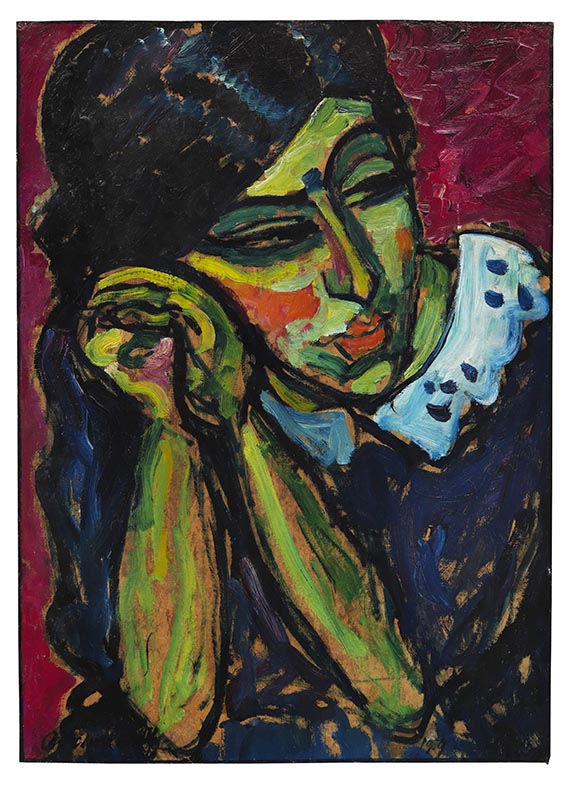Dictionary


Geometric Abstraction 1945-1960
Post-World War Two, abstract art was meant to become the unifying element in art. Alongside gestural, expressive, lyrical abstraction, geometric abstraction became an important artistic style.
The origins of geometric abstraction can be found in the geometrically influenced avant-garde art of the early the 20th century, as expounded by artists such as Piet Mondrian, László Moholy-Nagy, Kasimir Malevich, Robert Delaunay and Auguste Herbin. It was this style, which through an inner clarity, expressed ordered structure, and logical rules. In this sense, geometric abstraction post-1945 attempted to capture the world systematically, and it make meaningfully and rationally comprehensible through the medium of art. Thus, artistic production came to resemble precise scientific work. On both sides of the Atlantic, a formal vocabulary, based on geometric basic forms, emphasising the straight and (right) angle, was given visual expression in mathematical-style compositions.
Many artists continued their abstract oeuvres post-1945. In America, artists such as Charmion von Wiegand and Burgoyne Diller developed the tradition of geometric abstraction, whilst in Europe, it was taken up by artists such as Olle Baertling, Gaston Bertrand, Jean Dewasne, Auguste Herbin, Adolf Fleischmann, Naum Gabo, Fritz Glarner, Robert Jacobsen, Richard Mortensen and Victor Vasarely. In the second half of the 20th century, artists focussed on the notion of to what extent art and life could be intertwined. One group engaging with this question artistically was the Espace group, founded in 1951, whose members practised geometric-abstract art.
Post-World War Two, abstract art was meant to become the unifying element in art. Alongside gestural, expressive, lyrical abstraction, geometric abstraction became an important artistic style.
The origins of geometric abstraction can be found in the geometrically influenced avant-garde art of the early the 20th century, as expounded by artists such as Piet Mondrian, László Moholy-Nagy, Kasimir Malevich, Robert Delaunay and Auguste Herbin. It was this style, which through an inner clarity, expressed ordered structure, and logical rules. In this sense, geometric abstraction post-1945 attempted to capture the world systematically, and it make meaningfully and rationally comprehensible through the medium of art. Thus, artistic production came to resemble precise scientific work. On both sides of the Atlantic, a formal vocabulary, based on geometric basic forms, emphasising the straight and (right) angle, was given visual expression in mathematical-style compositions.
Many artists continued their abstract oeuvres post-1945. In America, artists such as Charmion von Wiegand and Burgoyne Diller developed the tradition of geometric abstraction, whilst in Europe, it was taken up by artists such as Olle Baertling, Gaston Bertrand, Jean Dewasne, Auguste Herbin, Adolf Fleischmann, Naum Gabo, Fritz Glarner, Robert Jacobsen, Richard Mortensen and Victor Vasarely. In the second half of the 20th century, artists focussed on the notion of to what extent art and life could be intertwined. One group engaging with this question artistically was the Espace group, founded in 1951, whose members practised geometric-abstract art.
Offers




